Sun Ra: In Search of the Space Chord
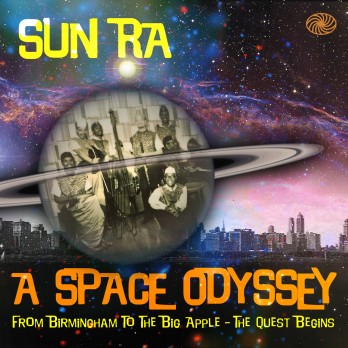
The Ultimate Guide, Part 1
by Kris Needs
(October 2014)
'In all these songs I'm deliberately attempting to tempt people to like higher forms of music. Eventually I will succeed.'
Over a hundred years since he first arrived on Planet Earth and 21 years since he made his final departure, Sun Ra's profile in the musical market-place has never been higher, the flow of releases which were once a hard-to-find trickle, have now swelled into a glistening, other-worldly torrent which, thanks to a long overdue official takeover, has just shot into the cosmos.
It has taken this long for the vast mass of Ra archive recordings to be approached with the focus, quality and knowledge suitable for one of the most important musical innovators of the last century. Painstakingly undertaken by Sun Ra Music Archive director Michael D. Anderson and writer, music historian and DJ Irwin Chusid, the Mastered for iTunes project got under way in May to mark what would have been Sun Ra's one hundredth birthday with a staggeringly colossal undertaking which affords his immense legacy its rightful place in the digital age. The pair have set up the Enterplanetary Koncepts label to release 24-bit transfers from the original analog tapes which Anderson has been archiving since he played drums with the Arkestra and was appointed tape librarian by Ra in the late '70's.
In a recent interview at Sun Ra Arkive, Chusid explained how Anderson was contacted in January by an iTunes editor who happened to be a Sun Ra fan dissatisfied by the number of albums available which seemed to be of "dubious legitimacy and sub-par sound. He wanted to find the best quality available recordings, heard about Michael's tape archive, and dropped him a note. I was really a novice about Sun Ra; a casual listener only, not an authority. But I'm friends with Michael and an iTunes direct content provider, so he asked me to administer the process.
"However, as Michael and I realized what an enormous job it was, I took on greater responsibility, including scanning and restoring vintage LP covers, writing and formatting the PDF booklets, and undertaking a lot of the digital audio restoration. I had a four month crash course in Sun Ra. Listened to everything, read everything, sought out the opinions of those who had been exploring Sun Ra for decades. I absorbed it all."
Crucially, in the light of rampant past exploitations, the project is being undertaken under licence from Sun Ra LLC, owned by his heirs. The original tapes have been restored and corrected, enough dirt and glitches removed to boost sound quality but keeping the funk and soul intact, tracks reinstated to full length with some in stereo for the first time.
"These are source tapes, not one or two generations a way from source," explains Chusid, who adds "that said, many of them are far from optimum fidelity. Sun Ra did not record in a Miles Davis studio with a Dave Brubeck budget. Some of these sessions used only two mics for a large ensemble. There are room noises, and the sound of musicians bumping into things. You've heard of Garage Rock? This is Garage Jazz. These session tapes contain many alternate, unreleased versions and an abundance of never-released material."
Most excitingly, there are large chunks of previously unheard music in the 21 albums which kicked off the mission in May, each accompanied by Chusid's astute notes. Sun Ra has never sounded more vibrant or natural, the quality sometimes enough to place the listener in the middle of a full-bore Arkestral space chord or floating in the eerie tranquility of deep space. For perhaps befuddled newcomers, the Archive has compiled then thematic collections under titles such as 'Outer Space,' 'Hard Bop' and 'Exotica' to make up a helpful Explore the Cosmos series.
"For me, the biggest discovery was the full scope of Sun Ra's musical genius," reveals Chusid. "I've joked that 'with Sun Ra's music, there's something for everyone to hate.' Exploring this catalog, you get everything but consistency and predictability. There's sweet melodies you could play at cocktail hour, and abrasive noise-art that could clear a concert hall - and based on accounts in John Szwed's Sun Ra bio, did on occasion drive audiences out the door. Sun Ra covers Gershwin with panache, then aggressively assaults his keyboard.
Chusid continues: "Sun Ra is sui generis. He has the one quality you can't fake: identity. He didn't blaze a path for other musicians, because no one could replicate his intuitive gifts, his eccentricities, his style. There may be other artists you'd 'like' if you 'like' Sun Ra, but there is no one LIKE Sun Ra. And despite my joking that in Sun Ra's music 'there's something for everyone to hate,' there is so much for anyone to love. He was a true musical ambassador, appealing to highbrow and lowbrow; to scholars, critics, and casual listeners; to jazz fans and rockers. His audience was limited because he was marginalized during his lifetime. Many people couldn't get a grasp on the monumental nature of his achievements. They didn't know what category he belonged in. 'All of the Above,' if you ask me. He was dismissed as a charlatan by some. But anyone who takes the time to explore this enormous body of music will be rewarded and impressed."
Before we leave the launch-pad, I also must mention that this piece was initially prompted by a marvelous collection released as a collaboration between esteemed UK label Strut and Ra-chivists Art Yard called In The Orbit Of Ra, which sees current bandleader Marshall Allen, who joined the Arkestra on alto saxophone in 1957, rummaging in the archives to come up with his own 25 year-straddling selection to mark his old boss's centenary. Compiling any Ra collection is a daunting task, as I found out when I put together the 3-CD Sun Ra, A Space Odyssey; From Birmingham To The Big Apple; The Quest Begins set for Fantastic Voyage in 2012. His brain-twisting discography encompasses nearly a thousand titles with hundreds of musicians in countless configurations spanning six decades, while albums on his El Saturn label could be released with different titles, mixing up tracks from different periods with random names. Considerable amounts of Ra's music have become available since the early '90's but, even with the iceberg systematically emerging from under its tip, Ra's catalogue but could still look like an impossible mountain too high to even dare the foothills. Unbelievably excited by the iTunes remastering, I'm going to try and list the key releases throughout his life and beyond as both beginners guide and entertaining roundup for more weathered space travelers. My first thing for PSF, scribbled by a scrambled frantic fan as something he would like to read and hopefully others will too.
Seat-belts in place, it's time to explore the strange, wonderful omniverse of the man born into this world a hundred years ago as Herman Blount.
The Eternal Myth Revealed (Transparency 2011)
Before El Saturn and the Arkestra, Ra played many sessions as pianist and arranger as his band coalesced and gestated. Over 14 CDs drawn from the Sun Ra Music Archive to cover 1914-1959, curator Michael Anderson recounts Ra's story, splattered with gems such as his first recording session on April 14, 1946, playing piano on two tracks by blues belter Wynonie Harris, singles for Bullet Records ("Dig This Boogie" and "Lightnin' Struck The Poorhouse"). The box documents his sessions from these early sessions as pianist and in demand arranger, through maiden voyages as bandleader and finally Arkestral space captain unleashing outer limits keyboard explorations.
Deep Purple (Saturn 1973, Evidence 1992)
The earliest known Sun Ra recording, later released under his own name, was captured on July 29, 1948 at his flat on his Ampex reel-to-reel tape recorder as he jammed on 1933 hit "Deep Purple" with jazz violinist Stuff Smith. Sounding like an ancient transmission, the song shimmers with arcane crackle as Smith's creaking violin dances with Ra's eerie Hammond Solovox, a primitive electronic instrument he'd acquired in 1941. "Deep Purple" eventually became title track of a 1973 Saturn album.
The Singles
(Evidence 1992) By 1953, Ra had started assembling a band, a major recruitment coming early that year in the form of John Gilmore, a relentlessly-practicing tenor sax perfectionist who'd jammed with Charlie Parker, worked with Earl Hines and became one of Ra's most loyal stalwarts until his (Gilmore's) death in 1995, known to influence Coltrane with his keening emotional power. Ra and right hand man Alton Abraham started El Saturn in 1956 as an outlet for the musical torrent swelling as the decade progressed. Abraham struck a deal with RCA for small quantities of records to be pressed [from 20 to 100 copies each]. They hand-delivered them to stores, sent mail order or sold at shows. It was one of the first musician-owned record companies, until 1988 Saturn released 71 Sun Ra albums, one by Pat Patrick and 26 singles, practically all roped together over two CD's in this fascinatingly diverse compilation starting from the first Sun Ra recording session in February 1956 at RCA Studios. The earliest Saturn singles (released as Le Sun-Ra and his Arkistra) were "Saturn"/"Supersonic Jazz," "Medicine for A Nightmare"/ "Urnack," "Super Blond"/"Soft Talk" and "A Call For All Demons"/"Demon's Lullaby." Some reappeared on 1967's Angels and Demons At Play.
Sound Sun Pleasure!! (Saturn 1970; Mastered for iTunes 2014)
Recorded at the same March 1959 sessions in Chicago which produced Jazz In Silhouette, the 25 minute Sound Sun Pleasure!! waited over ten years before being released on Saturn (although early classic "Enlightenment" appears on both albums). Although the 25 minute album was paired with Deep Purple on its 1992 reissue, it now stands alone (and more effective) in the 2014 remastering as one of Ra's most traditional outings, placing four standards (including Monk's "Round Midnight" and "Back In Your Backyard" sung by Hattie Randolph) alongside two tracks composed by Ra and trumpeter Hobart Dotson. The presence of Gilmore and baritone saxist Pat Patrick bring the beef.
Spaceship Lullaby (Atavistic 2003)
Around 1954, Ra got into coaching vocal groups, starting with Nu Sounds then the Cosmic Rays. 1959's "Dreaming" single debuted Ra's early cosmic lyrics, with lines about "a world where things aren't what they seem." Nu Sounds' "Spaceship Lullaby" mused on space travel between harmonized outbursts of 'Zoom zoom zoom up in the air,' blueprinting the later space chants. This CD collates Ra's vocal group rehearsals and singles while New York's esteemed Norton label have released three volumes of Ra's vocal group recordings and other early oddities such as local eccentric Yochanan 'The Man From Outer Space' (who recorded "Muck Muck" in 1957 with Ra and tenor sax by future Arkestra stalwart Pat Patrick) on Interplanetary Melodies, The Second Stop Is Jupiter and Rocket Ship Rock.
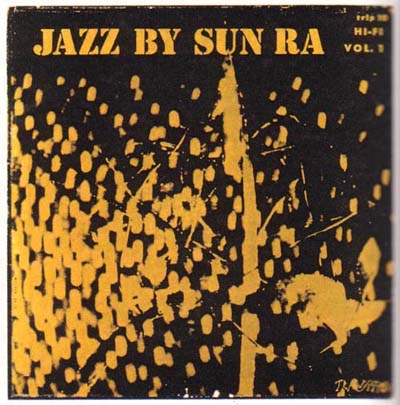
Jazz By Sun Ra (Transition 1957; Delmark 1967; Delmark CD 1991, renamed Sun Song)
The first Sun Ra album appeared on the Transition label started by producer Tom Wilson to document new jazz. Recorded at Chicago's Universal Studios on July 12, 1956, the album traversed modern and avant jazz, stacked with racy, snapping virtuoso surges such as "Brainville" and "Street Called Hell" while "Sun Song" is the most obvious future pointer to the exotic, Ra playing thick Wurlitzer chords over tribal pulse.
Super Sonic Jazz (Saturn 1957; Impulse 1974; Mastered for iTunes 2014)
Rather than being conceiving as a whole album, Super Sonic Jazz comprised tracks recorded over various sessions in Autumn 1956 (including some released as singles) but was released the following March as Saturn's first album and a maiden long-playing voyage for the Arkestra name. The processional "India" and atmospheric "Sunology" further point to upcoming ancient Egyptian-tinged explorations, while "El Is The Sound Of Joy" and "Springtime In Chicago" are cool encapsulations of Ra's Chicago period. Although nodding at current musical styles such as bebop and Latin, there was already a startlingly new and panoramic vision at play in these joyful first forays.
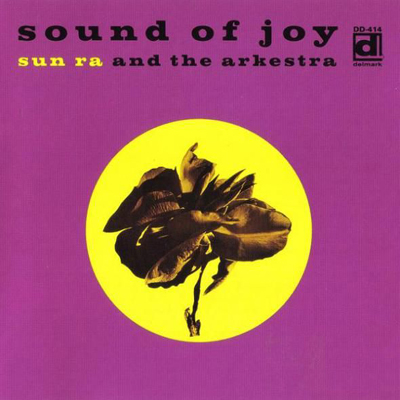
Sound of Joy (Delmark 1968; Delmark CD 1994)
A November 1956 studio session produced tracks which might have appeared on a second Transition set but waited until 1968 to become many people's first wider-available taste of Sun Ra. These include "Planet Earth"'s multi-layered fanfare, "Eve"'s widescreen tugboat piano cruise, mystical slo-mo chug of "Ankh" and "Overtones Of China" stir-frying another Oriental tone painting. Welcome aboard Marshall Allen while bassist Ronnie Boykins was also asserting himself as one of the early Arkestra's most invaluable assets, his bow work adding an eerie dimension for the next decade. Some tracks were paired with early 60s rehearsals recordings to provide side B of 1966 Saturn album Visits Planet Earth (which has been blessed with the stand alone Mastered for iTunes treatment).
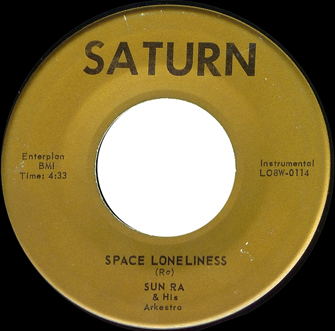
We Travel The Spaceways (Saturn 1967; Mastered for iTunes 2014)
Another Chicago session collection, spanning three sessions from between 1956-61 (but not even scraping 25 minutes). Illustrating the increasingly haphazard release schedules, all the seven tracks appear on other albums in different versions, becoming firm faves in the Ra repertoire (including the title track and "Interplanetary Music"). It also features a personal fave in the desolately weightless space sheets of "Space Loneliness" (which appears in a slower version on Interstellar Low Ways).
Lady With The Golden Stockings (The Nubians Of Plutonia) (Saturn 1966; Impulse 1994; Mastered for iTunes 2014)
Originally known as Lady With The Golden Stockings before a 1969 Saturn catalogue listed it as The Nubians of Plutonia, this album was constructed from 1958-59 rehearsal tapes which show the genesis of Ra's explorations into spacey African soundscapes on tracks such as sinuously percussive "The Golden Lady," "Africa," Wurlitzer-drum pulser "Nubia" and "Plutonian Nights" replanting of the 'Call For All Demons' motif over the patent Arkestra processional shuffle. "Aiethopia" was a prototype of the track which would reappear on Jazz in Silhouette, while 'Watusi' debuted the jumping later stage fave.
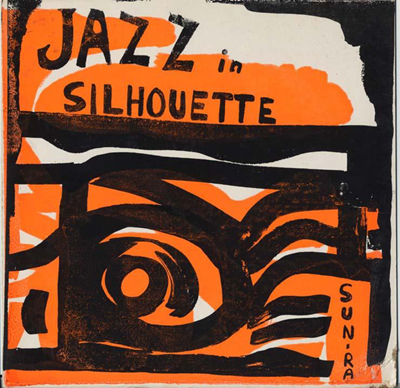
Jazz In Silhouette (Saturn, 1959; Impulse 1974; Evidence 1992; Mastered for iTunes 2014)
Recorded on March 6, 1959, Ra's later acclaimed early masterpiece is a magnificent big band mutant with hints of things to come, boasting the Arkestra's richest sound yet. "Ancient Aeithopia" is a spooked future portent with creeping piano, cloudburst flutes and primitive drum patterns while 'Enlightenment' is an early 'space march.' "Saturn," "Velvet," "Hours After" and "Blues At Midnight" are revisited with full-bodied richness.

Angels And Demons At Play (Saturn 1963-67; Impulse 1974; Evidence 1993; Mastered for iTunes 2014)
On June 17, 1960, Sun Ra and the last Chicago Arkestra lineup [Allen, Gilmore, Boykins, trombonist Nate Pryor, trumpeter Phil Cohran and drummer Jon Hardy] spent an incredibly productive day at Chicago's Hall studios, recording between 30 and 40 tracks, which would fill five albums [although it would be five years before most saw release on Saturn]. This single day's creative star-burst was startling in its range, most credited to Sun Ra and his Myth Science Arkestra, later seemingly released at random. Side one of Angels And Demons At Play came out of these sessions [while side B's hard bop outings, three already released as singles, dated back to 1956's first session]. The 1960 outings strip down to African-influenced grooves [with shades of exotica pioneer Les Baxter], woodblock percussion and woodwind sometimes shaping the Arkestral style into skeletal proto-dub, while the experimental "Music From The World Tomorrow" provides the most startling but prescient step into the musical unknown.
Fate In A Pleasant Mood (Saturn 1965; Evidence 1993; Mastered for iTunes 2014)
This album was also recorded at Hall that day in 1960 but not released until 1965, this time straddling cool urban jazz, bebop, intergalactic love suites, a sprightlier "Ankh," Gilmore's clarinet-draped "Lights Of A Satellite" (also here in its unreleased 45 version on the digital remaster) and sublimely understated title track written for trumpeter Phil Cohran [a key figure bringing African music into jazz]. "Kingdom Of Thunder" and "Distant Stars" came from late 1960-early '61 rehearsals.
Holiday For Soul Dance (Saturn 1970; Evidence 1992; Mastered for iTunes 2014)
Hall-recorded nightclub-friendly trawl through standards such as "Day By Day," "I Loves You Porgy" and "Body And Soul" - first released at the height of Ra's trail-blazing space travels!
Interstellar Low Ways (Saturn 1966; Evidence 1992; Mastered for iTunes 2014)
Originally titled Rocket Number Nine when released on Saturn in 1966 before being reissued retitled three years later, this album was one of Ra's earliest concerted efforts to push jazz into the space age, although the music was still loaded with bebop and swing. The title track dates from the March, 1959 session which produced Jazz In Silhouette and Sound Sun Pleasure!!, "Space Aura" and "Onward" from October 1960 rehearsals and the rest from the Hall date, including wigged-out proto space-chant "Rocket Number Nine Take Off For The Planet Venus" [possibly influenced by Yocannan].

The Futuristic Sounds Of Sun Ra (Savoy 1961; Savoy 1993 CD; various reissues)
After a decade and a half in the Windy City, tired of local indifference by fans and the press, Sun Ra decided to take his music elsewhere. On July 31 1961, he took a core Arkestra of Gilmore, Allen, Barry and Boykins to play two weeks at the El Morocco club in Montreal, ending up staying several months. They then descended on New York City, with Ra planning to play some gigs, maybe record, then return home. When their car was disabled in a crash, effectively stranding them, Ra called producer Tom Wilson, who found them accommodation then arranged a session at Newark's Medallion Studios on October 10 which resulted in landmark album The Futuristic Sounds Of Sun Ra. With Ra playing acoustic piano, Allen, Gilmore, Patrick and Boykins were joined by trombonist Bernard McKinney, drummer Willie Jones and conga player Leah Ananda, with all doubling on percussion. The sound veered between a new style of primitively skeletal space jazz and super-sonic modern jazz. With bad distribution and not a shred of press, the album tanked.
Bad And The Beautiful (Saturn 1972; Evidence 1992; Mastered for iTunes 2014)
The Arkestra initially found work hard to come by in New York City, finding themselves too out there even for a city in the throes of a counter-cultural revolution. They struggled to find places to rehearse, let alone play but Chicago drummer Tommy 'Bugs' Hunter, who Ra had met when both were in Lil Green's band in the late 1940s and had relocated to New York in 1953, climbed on board and found the Arkestra a free rehearsal spot in the basement of the Choreographer's Workshop at 414 West 51st Street, where they practiced relentlessly at nights and on weekends for the next three years. Bugs recorded many of the rehearsals on the Ampex 601 reel-to-reel tape recorder he had bought in a pawn shop, rejoining his homeboys through to Ra's last recording session nearly 30 years later.
The first album Ra sent back to Abraham in Chicago was this relatively traditional set of four Ra originals and three jazz standards, recorded late 1961 in the Choreographers Workshop basement on West 51st Street, which would be the Arkestra's rehearsal space for the next three years. It would not be released by Saturn until 1972. In his notes to the 2014 reissue (which noticeably boosts the sound quality and adds a Pat Patrick showcase "Street Of Dreams"), Chusid describes the album as "a resume," which "lays out what what Sunny had learned as a pianist, composer, earlier growing up in Birmingham. The album seems to say: This is who we are, this is what we did, we hope you like it, but don't expect us to continue in this fashion."
Art Forms Of Dimensions Tomorrow (Saturn 1965; Evidence 1992)
This is usually credited as Ra's first 'outside' recording. Bugs discovered that if he recorded with headphones on and messed with the jack sockets, he could create a cavernous, dub-presaging reverb effect. He feared Ra would be angry at this unexpected wild turn, but the boss loved it ["It blew his mind!"], using the reverb as an instrument on the startling "Cluster Of Galaxies" and "Solar Drums." Using feedback and distortion, Ra broke all rules on spooked sorties such as "The Outer Heavens" and "Infinity Of The Universe" mating reverb with Boykins' bowed bass, chamber groups, scuttling percussive undergrowth and his bubbling Mars lava piano to stoke the dream-like soundscapes which now turned the exotica groove of 'Ankh' into a grinding funk vamp.